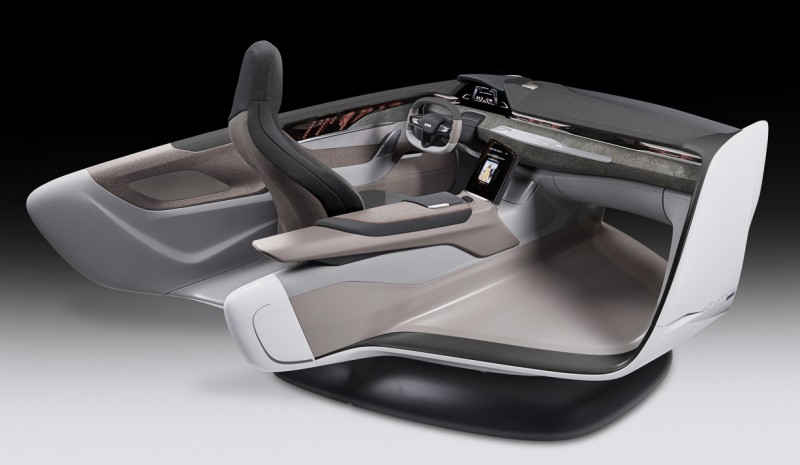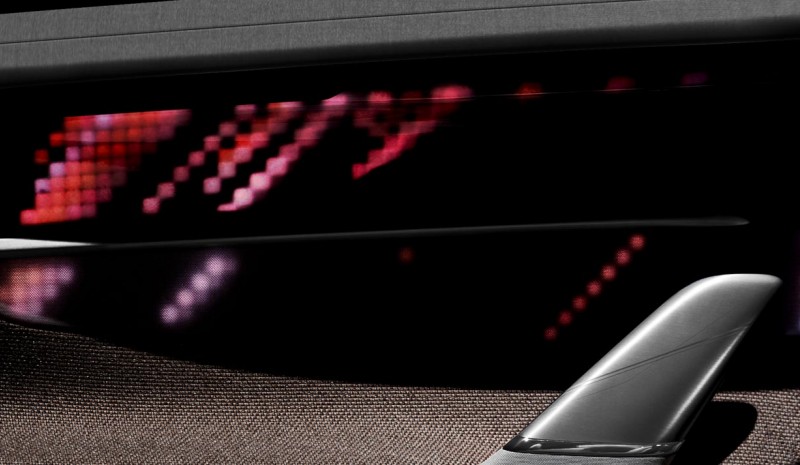So be inside future cars
Get on with us aboard the car of the future. We show you how to be inside: seats, screens or materials will trend a few years.
The next few years will attend a complete revolution car interior. The cockpit of the future will connected, intuitive, adaptable, sensitive, warm and proactive and this will involve changes at all levels, not only technological, also of materials or configuration. Faurecia It is one of the major players in the automotive interior architecture and according to forecasts this market move around 27,000 million euros from here to nine years in 2025. This is almost twice what actually moves. Precisely Faurecia, a French manufacturer of equipment and solutions for the automotive, shows us how will the car interior of the future.
The interior of the cars of the future: the seat
Experience with the smart car starts from the moment you take the seat. He Active Wellness 2.0 developed by Faurecia is a seat capable of monitor the physical and mental state Driver (heart rate and respiration, temperature, head tilt, restlessness, flicker …) and act accordingly, relieving stress or sleepiness. Through various sensors, on the seat itself or on the instrument panel, Active Wellness 2.0 collects and analyzes biometric data driver, memorizing their behavior and preferences. This allows you to predict how it will be more comfortable, based on your current fitness level, time of day, travel conditions, or even if you drive in autonomous or semi-autonomous mode. If the seat detects discomfort, stress or sickness, can act with measures such as position adjustment, a program that includes five different massages, more or less ventilation, changes in lighting or ambient sound.
Inside the cars of the future: functional decoration
If, as it seems, the future lies in the autonomous car, Faurecia emphasizes interior where the driver can interact with technology through smart surfaces and functional decor. Thus, the center console (with AMOLED technology) Is mixed with decorative elements. Display instruments, AMOLED also is ultrathin, consume less power than their predecessors, It can be curved and it is made from two separate plastic materials bonded together to form a rigid screen high resolution.
Passes unnoticed TFT black screen that runs from the instrument panel and displays information related to the Infotainment system or the driver’s smartphone. developed in collaboration with Magneti Marelli, only it is shown when activated and remains in the background, as a decorative element more, while it is not working. Faurecia also has managed to transform spaces of wood, aluminum or plastic for view smart surfaces which hide HVAC controls, for example. They offer also an haptic or visual response After activation, vibrating or brightening.
The interior of the cars of the future: always connected
The digital transformation requires us to be constantly connected, also in the car. Inside the future is I hyperlinked and this connectivity unavoidably involves our personal devices. Interior architecture adapts to the driver preferences, Also your smartphone or tablet. We are already seeing, but in the coming years wireless chargers are commonplace and need not necessarily be located in the center console.
The interior of the cars of the future: intelligent predictive
The car of the future will have to fit various different scenarios, always with the focus on safety, comfort and well-being. If the vehicle is in standalone mode and the driver wants to read or sleep, for example, the seat may adjust the headrest, backrest and armrests to a more relaxed position. It should also be able to assess whether the driver is ready to regain control of the car before leaving the stand-alone mode. Also, the use of sensors and the availability of a large amount of data will allow the carrier to develop ability to anticipate, learn and adapt each occupant and needs.




